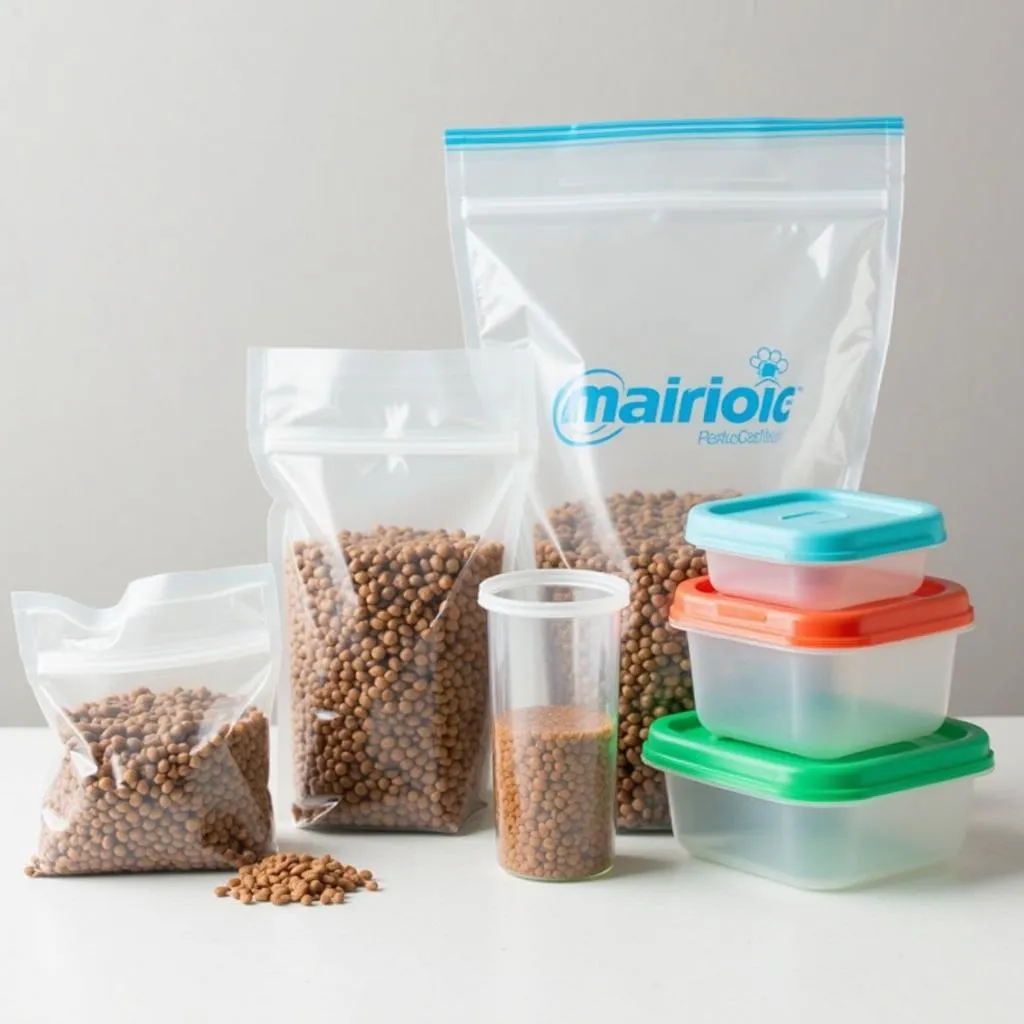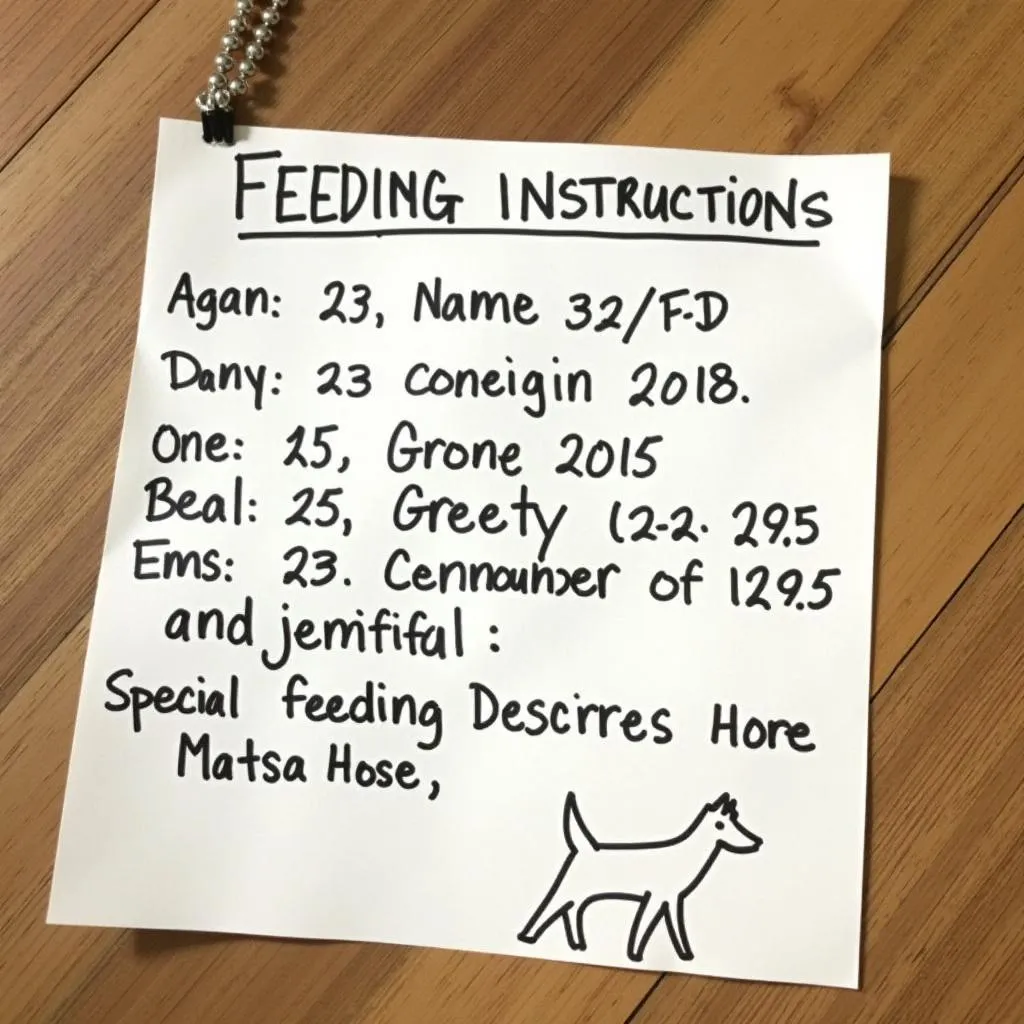“Học ăn, học nói, học gói, học mở,” goes the Vietnamese proverb, which translates roughly to “learn to eat, learn to speak, learn to pack, learn to open.” It’s a reminder that even the simplest things in life require practice and knowledge. And when it comes to packing your furry friend’s food for boarding, knowing the right way to do it can make all the difference in keeping them happy and healthy while they’re away from home.
Understanding the Importance of Proper Packing
Let’s face it, no one wants their dog to go hungry while they’re away. But just throwing a bag of kibble into a suitcase isn’t enough. Proper packing involves more than just ensuring there’s enough food; it’s about keeping the food fresh, preventing spills, and making sure your dog’s boarding facility has everything they need to manage meal times.
What to Pack for Your Dog’s Boarding Stay
Food Quantity and Type
Remember, you know your dog best! Pack enough food to last the entire boarding stay, plus a little extra just in case. Consider factors like your dog’s appetite, any dietary restrictions, and the length of the boarding stay.
If your dog eats a special diet or has allergies, be sure to bring along enough of their specific food. You can also talk to the boarding facility about whether they have any specific requirements regarding food packaging.
Food Containers
Instead of simply dumping kibble into a bag, opt for airtight containers. This will help keep the food fresh, prevent spills, and ensure your dog’s meals remain appealing. There are many different types of containers available, including:
- Ziploc bags: These are affordable and easy to find, but may not be ideal for larger quantities of food or for long-term storage.
- Tupperware containers: These are durable and reusable, making them a good option for storing food.
- Food storage bags: These are designed specifically for storing food and often have features like airtight seals or zipper closures.
Feeding Instructions
Don’t assume the boarding facility knows exactly how much to feed your dog. Write down their daily food intake and meal times clearly on a piece of paper. This will help the staff manage their meals effectively and prevent overfeeding or underfeeding. Include any special instructions for feeding, like hand-feeding or specific types of food bowls to use.
Additional Tips for Packing Dog Food
- Label everything clearly: Label all containers with your dog’s name and any relevant feeding instructions.
- Pack a small container of treats: Having treats on hand can be helpful for rewarding your dog or keeping them entertained during their stay.
- Bring their favorite toys and blankets: Familiarity can help your dog feel more comfortable in a new environment.
- Check with the boarding facility: Always inquire about their food requirements and policies before you arrive.
Packing Examples and Scenarios
Scenario 1: Imagine you have a small breed dog, a Chihuahua named Luna, who eats a high-protein kibble diet. You’re leaving for a weekend trip and Luna will be staying at a boarding facility.
In this case, you might pack:
- Food: A bag of Luna’s high-protein kibble.
- Containers: One or two airtight containers for storing a few days’ worth of kibble.
- Feeding instructions: A note with Luna’s name, daily food intake (e.g., 1/2 cup kibble twice a day), and any special feeding instructions.
- Treats: A small container of Luna’s favorite treats.
Scenario 2: Imagine you have a large breed dog, a Golden Retriever named Max, who eats a raw food diet. You’re leaving for a week-long vacation and Max will be staying at a boarding facility.
In this case, you might pack:
- Food: Enough raw food to last for the week, along with a small cooler to keep it chilled.
- Containers: Airtight containers for storing the raw food.
- Feeding instructions: A note with Max’s name, daily food intake, meal times, and any specific feeding instructions.
- Frozen food: A couple of frozen raw food meals to ensure Max has fresh food for the first few days of his stay.
The Role of Trust in Pet Boarding
“Trust your gut,” the old Vietnamese saying goes, and this rings true when choosing a boarding facility for your pet. Look for a facility that is clean, well-maintained, and has staff who are knowledgeable about pet care. Trust your instincts and choose a place where you feel comfortable leaving your furry friend.
A Word of Caution
While proper packing can help ensure your dog’s well-being, it’s essential to remember that every dog is different. Some dogs may have more difficulty adjusting to boarding than others. It’s a good idea to speak with your vet about any concerns you might have before leaving your dog at a boarding facility.
 dog food storage containers for boarding
dog food storage containers for boarding
 dog food feeding instructions for boarding
dog food feeding instructions for boarding
Final Thoughts
Packing your dog’s food for boarding may seem like a simple task, but it’s an important part of ensuring their comfort and well-being while they’re away from home. Take the time to pack their food carefully, and remember to communicate with the boarding facility about any specific needs your dog might have. By following these tips, you can rest assured that your furry friend will be well-fed and happy during their stay.
Remember: If you have any questions or concerns about packing dog food for boarding, don’t hesitate to contact our team of pet experts at i love my pet. We’re here to help you every step of the way.
Leave a Reply
You must be logged in to post a comment.